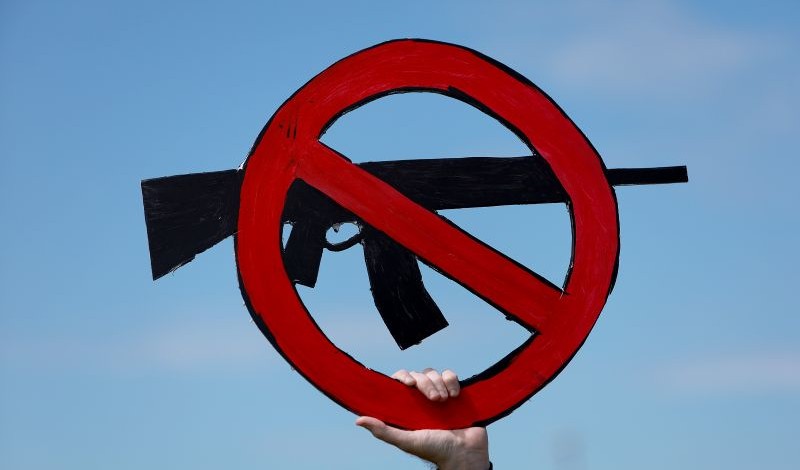
Scholar argues that legal defenses of gun rights often rely on a fundamental misreading of history.
The Supreme Court has long used history and tradition as one of its many tools for constitutional interpretation. This use has increased in recent years, including in cases involving the highly contested issue of gun regulation.
In a recent article, Brian DeLay of the University of California, Berkeley critiques historical narratives often invoked in Second Amendment litigation following the Supreme Court’s 2022 decision in New York State Rifle & Pistol Association v. Bruen. In that decision, the Court struck down a New York law that heightened the standards for concealed carry license eligibility because it was inconsistent with “historical tradition” and the “plain text” of the Second Amendment.
According to DeLay, the Court’s elevation of “history, text, and tradition” as the sole criteria for evaluating firearm regulations has empowered gun-rights advocates to claim that firearm culture in the United States has remained fundamentally unchanged since the founding era. DeLay challenges this view—which he terms the “myth of continuity”—arguing that American gun culture has evolved significantly over the past two centuries. He contends that contemporary claims about historical parallels often rely on a selective and misleading interpretation of the past.
In the Bruen decision, the Court mandated that present-day firearm regulations align with “the Nation’s historical tradition of firearm regulation.” Under this new framework, courts must assess whether contemporary firearm laws have a clear historical analogue. Gun-rights advocates have interpreted this to mean that if a specific firearm regulation did not exist in 1791 or 1868—when the Second and 14th Amendments were ratified— it cannot be constitutional today.
This approach has led to increased litigation challenging restrictions on high-capacity magazines, assault weapons, and ghost guns—firearms “assembled by amateurs either from commercially available kits or by using 3D-printers.” According to DeLay, the plaintiffs in these cases frequently assert that historical evidence supports their claims, often leaning on the assumption that repeating firearms—guns capable of firing multiple rounds without reloading—and self-made guns existed and were widely embraced in early America.
DeLay contends that this assumption rests on a distorted view of history that ignores significant technological, cultural, and societal differences between the past and the present. Although consumerism, individualism, and distrust of government characterize today’s gun culture, DeLay asserts that early America’s gun culture was utilitarian, collective, and state-regulated. As he explains, Americans in the colonial and early national periods used firearms primarily as tools for hunting, pest control, and collective defense rather than objects of personal identity or ideological expression.
DeLay also outlines how militias—mandated by colonial and early state governments—played a central role in ensuring firearm distribution and training among white male colonists and citizens. In regions with higher levels of militia activity, such as New England and the Chesapeake, firearm ownership was more widespread. Conversely, in areas such as Pennsylvania and New York, where militias were less active, gun ownership was significantly lower.
DeLay argues that local projects of “collective-offense”—such as the policing of enslaved people, settler colonialism, and imperial conflicts—best explain these patterns, rather than modern concepts of individual self-defense or consumer choice. Early American colonial and state governments encouraged white gun ownership, he notes, so that they “could safely take what they wanted from Black and Indigenous people.” Regulations limiting white gun ownership, he concludes, “would have been incompatible with these projects.”
According to DeLay, the “myth of continuity” also assumes that the Founders were familiar with repeating firearms and embraced them. He challenges this notion by examining the technological limitations of repeating firearms in the 18th century. Although inventors did experiment with multi-shot weapons, DeLay emphasizes that these designs were unreliable, expensive, and impractical for widespread military or civilian use. Instead, most firearms available in early America were single-shot muskets or rifles, which required time-consuming reloading after each shot.
DeLay suggests that the limited availability and impracticality of repeating firearms best explains why there were no regulations addressing high-capacity guns during this period—they were simply not common enough to warrant legislative attention.
Some recent Second Amendment litigation also involves “ghost guns”—unregulated firearms assembled from kits or 3D-printed parts. Proponents of deregulating ghost guns argue that self-made firearms were common in early America and thus fall under the Second Amendment’s protection. DeLay disputes this narrative, showing that self-made firearms in early America were rare and generally unreliable. Consequently, firearm production during this period was instead highly specialized and heavily reliant on imported parts and expertise from Europe.
In addition, DeLay argues that the absence of historical firearm regulations does not imply an ideological commitment among early Americans to unrestricted access to weapons. Instead, he suggests that it merely reflects the technological and social realities of the time.
Repeating firearms, high-capacity magazines, and semi-automatic weapons only became widely available and socially impactful in the late 19th and early 20th centuries, while ghost guns are a modern phenomenon. When these technologies began to pose clear societal risks, DeLay observes, governments responded with regulations, including restrictions on automatic and semi-automatic firearms.
DeLay insists that by misinterpreting historical silences as evidence of intentional constitutional principles, modern gun-rights advocates distort the historical record to serve contemporary political goals. He proposes that courts should approach such legal arguments that rely on historical omissions with caution. “Courts evaluating the constitutionality of firearms laws,” he urges, “would be on much firmer historical ground if they began by presuming discontinuity between the founding era and now.”
DeLay concludes by reflecting on the long-term implications of Bruen. Although the decision has emboldened gun-rights advocates and reshaped Second Amendment litigation, it has also created opportunities for historical inquiry to challenge prevailing narratives. DeLay recommends that states defending firearm regulations invest in rigorous historical research to counter the myth of continuity effectively.
Furthermore, DeLay suggests that the heightened focus on historical analysis could destabilize a foundational claim upon which the Bruen ruling rests—that the Second Amendment protects an individual right to self-defense. He predicts that the role of professional historians in informing legal arguments will become increasingly significant as courts continue to grapple with these questions.



